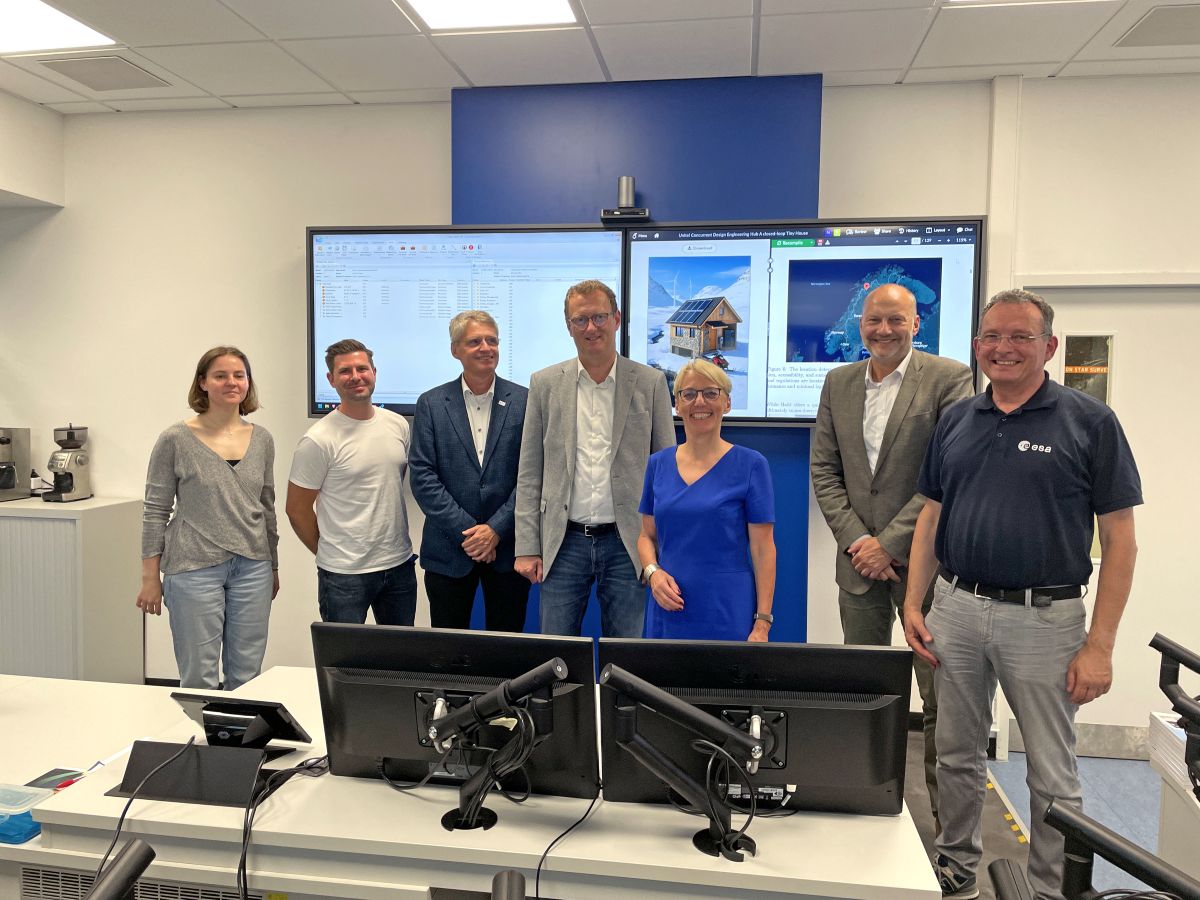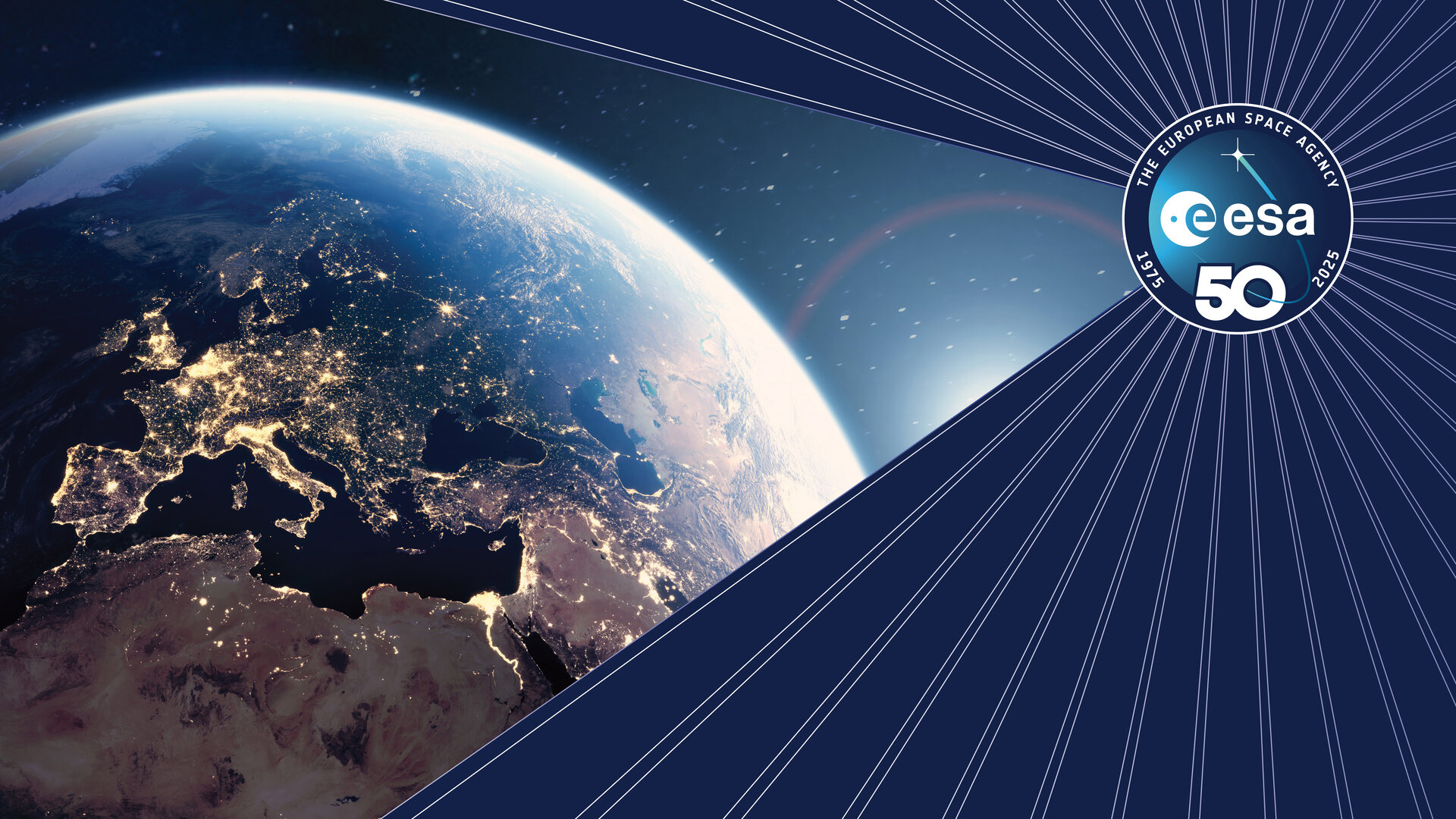IADC celebrates 30th anniversary at ESOC
The Inter-Agency Debris Coordination Committee (IADC) is celebrating its 30th anniversary this week during the 41st IADC Annual Meeting. We are honoured to host 100 experts from 13 major space agencies for the event at ESOC, ESA’s European space operations centre. It is fitting to celebrate its successes thirty years after the committee's original formation took place at ESOC as well. Over the last decades, the IADC had a large impact on the visibility of the challenges space debris pose and greatly helped shape efforts to mitigate them.
Collaborative efforts towards a cleaner space environment
The Inter-Agency Debris Coordination Committee (IADC) is an international governmental forum for the worldwide coordination of activities related to man-made and natural debris in space.
The IADC was established in 1993 as an international forum for space agencies, organizations, and governmental bodies to collaborate on addressing the challenges posed by space debris. Its primary objective is to promote the coordination of activities and exchange of information among its member entities. Since its inception, the IADC has played a crucial role in shaping policies and strategies to ensure the sustainable use of outer space.
The IADC member space agencies includes: Italian ASI (Agenzia Spaziale Italiana), French CNES (Centre National d'Etudes Spatiales), Chinese CNSA (China National Space Administration), Canadian CSA (Canadian Space Agency), German DLR (German Aerospace Center), Indian ISRO (Indian Space Research Organisation), Japanese JAXA (Japan Aerospace Exploration Agency), Korean KARI (Korea Aerospace Research Institute), Russian ROSCOSMOS (State Space Corporation), Ukrainian SSAU (State Space Agency of Ukraine), UK Space Agency, ESA (European Space Agency) and NASA (National Aeronautics and Space Administration).
The structure of IADC includes a Steering Group and four specified Working Groups responsible for topics of measurements, environment and database, protection and finally mitigation.

The 41st IADC annual meeting at ESOC in Darmstadt, Germany marks the 30th anniversary of its formation
Debris mitigation guidelines
In March 2002, the Mitigation Working Group undertook the challenge to develop the first set of consensus international space debris mitigation guidelines, which have been updated more recently in 2021. This document has since served as a baseline for non-binding policy documents, national legislation, and as a starting point for the derivation of technical standards.
The Guidelines cover the overall environmental impact of the missions with a focus on the following:
- Limitation of debris released during normal operations
- Minimisation of the potential for in-orbit break-ups
- Post-mission disposal
- Prevention of on-orbit collisions.
These guidelines continue to serve as a framework for space agencies and satellite operators to minimize the creation of space debris during all stages of the spacecraft lifecycle. The IADC's mitigation guidelines have become widely adopted by the international space community, contributing significantly to the reduction of space debris.
Statement on Active Debris Removal
The IADC recognised the need for more proactive measures to tackle the growing space debris problem. When the IADC released a groundbreaking statement on active debris removal (ADR) it had - and continues to have - great impact. The statement highlights the importance of actively removing defunct satellites, spent rocket stages and other debris from orbit to mitigate collision risks. The IADC advocates for the development and deployment of technologies and techniques for active debris removal, fostering collaboration among member agencies to pursue these efforts.
To accomplish these goals, the IADC encourages three concrete actions, for:
- Operators to follow existing orbital debris mitigation guidelines with a post mission disposal reliability as high as practicable but no less than 90%.
- Further research and cost-risk-benefit analysis on active debris removal and to identify and demonstrate concepts and enabling technologies which can satisfy technical, economic and safety considerations with the goal of stabilizing the debris population.
- Newly launched spacecraft and upper stages to be ADR ready in case of PMD failure.

Collision avoidance is becoming more important (credit: ESA Space Debris Office)
Space Debris Environment report
In 2022 the IADC commissioned the report on the status of the space environment. The report is to be released at regular intervals to raise the awareness of space farers, decision takers and the interested public on the status of the environment, and help develop a common understanding and route towards a sustainable space environment.
The environment reports produced by the IADC combine data from ground-based sensors, space-based instruments, and sophisticated computer models to analyze the state of the space environment. They identify areas where member agencies can focus their efforts to minimize space debris, such as improving spacecraft design for end-of-life disposal, enhancing collision avoidance practices, and promoting international cooperation on space traffic management. These reports also highlight the importance of data sharing and collaboration among member agencies to achieve a more sustainable space environment.
Looking to the future
Due to the deployment of large satellite constellations and a shift towards commercial operators, a significant change and increase in launch traffic has been seen in lower Earth orbit (LEO), especially since 2010.
The widespread adoption of the IADC space debris mitigation guidelines and the IADC recommendations for large constellations of satellites remain the most effective method to reduce the long-term environmental impacts of global space activity. They slow the rate of growth of the observed space debris population.
With this increasing number of active satellites, collision avoidance is becoming more important. This is in part because the adoption of the IADC space debris mitigation guidelines is not yet at a level sufficient to induce substantial benefits or slowing of the population growth.
In fact, the extrapolation of current space launch activity could lead to the rapid growth of the orbital object population. And even in the case of no further launches into orbit, it is expected that collisions among space debris objects already present would still lead to a further increase in space debris.
It is therefore clear that the IADC will continue to have a crucial role to play. Further research and discussions are encouraged within the global community to develop a consensus view on the definition of a sustainable space environment. The IADC is committed to continue playing a key role in preserving our valuable Earth orbits for the future and foster space sustainability.



